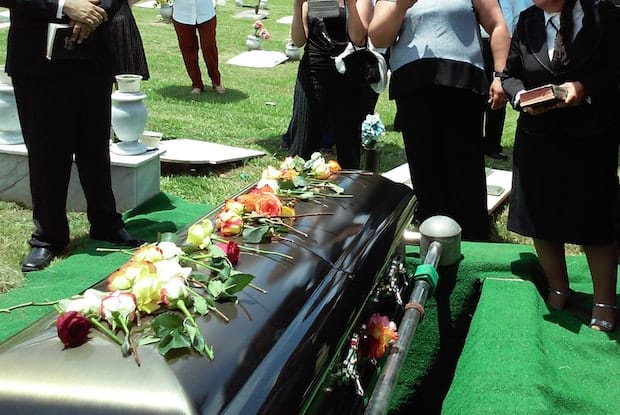Table of Contents
II. Triggers for Situational Depression
III. Symptoms of Situational Depression
IV. Seasonal Affective Disorder
The emotions of everyday life can take a toll on the human brain. There are many ups and downs in life, but some of these events may take a greater emotional toll than others. When unfortunate things happen, they may overwhelm a person and force them to cope with uncomfortable circumstances. Usually, these feelings subside over time, and people learn to adapt to any changes.
The period of time after a traumatic life event can trigger situational depression. Situational depression differs from clinical depression because it typically occurs for a short time. Clinical depression is a more serious mental health condition that occurs almost constantly.
We all may experience situational depression in our lifetime. Still, it is essential to keep an eye on our emotions because this type of depression could develop into a more serious mental health condition. If your depression develops into a serious problem, you may be prescribed antidepressants, such as Paxil (paroxetine), Effexor XR, Wellbutrin XL (bupropion XL), or Trintellix (vortioxetine). Read on to learn more about symptoms and treatments for situational and seasonal depression. [1]
Get savings updates for Wellbutrin XL
Grief vs. Depression
Differentiating between grief and depression can be difficult. They both share similar symptoms but have distinct differences. Both grief and depression share similar symptoms at first, including intense sadness, poor appetite, weight loss, and insomnia. Many people go through the stages of grief differently, but some forms of grief may not dissipate over time, similar to depression. This can be a sign of complicated grief and can result in self-destructive behaviors often associated with depression, like contemplating or attempting suicide.
Grief often occurs in waves when you are reminded of a lost loved one or relationship, but you should feel relatively better over time. Depression is not as fleeting and much more pervasive. Depression is ongoing and positive events may not make you feel better. Those with depression will also often experience excessive sleeping, overeating, and weight gain. Other symptoms can include feelings of worthlessness, guilt, and sluggishness. [2] Situational depression is also known as a mood adjustment disorder. Dramatic life changes can trigger this type of depression, including: These events can turn a person’s life upside down, and if you do not have the proper coping skills to deal with a life-changing situation, unpleasant symptoms may occur. If you feel that you are not progressing through the proper stages of grief and are experiencing something more severe, it is important to seek out friends, family, or mental health professionals. [3] Typically, signs of situational depression will begin to present themselves three months after a triggering event. Situational depression is often short and usually recedes around six months after the traumatic event. Symptoms of situational depression can vary greatly and may be mild or severe. Common symptoms of situational depression can include: Seasonal affective disorder (SAD) can be related to situational depression because it only occurs a few months out of the year. Those with SAD typically develop symptoms at the same time each year, usually in the winter months. SAD symptoms often occur from the winter until the spring or early summer. Some people may have the opposite pattern and experience symptoms in the summer, but this is more uncommon. [5] Over half a million people in the United States suffer from winter SAD, and around 10 to 20 percent are affected by a milder form of “winter blues.” [6] Naturally, SAD occurs more often in places with gloomy and dark winters at high altitudes. When the availability of the sun is limited, the internal biological clock is disrupted. This internal clock regulates mood, sleep, and hormones, and the sun helps keep this clock in working order. When there isn’t any sun to reset your clock, then your mood may be affected. Some other theories suggest that melatonin may also be affected by sunlight. Melatonin is a chemical that affects sleep patterns, and a lack of sunlight may stimulate melatonin, leading to sluggish feelings. [6] For many people, the symptoms of seasonal affective disorder get more severe as the winter drags on. Typical signs and symptoms of SAD can include: If you experience fall and winter seasonal affective disorder (winter depression), you may also experience: If you experience spring and summer seasonal affective disorders, you may experience: In situational depression, there are several things a person can do to improve their symptoms. Typically, situational depression will get better as time passes. Situational depression usually improves without active treatment. This also depends on the personality of the person affected because some people are more prone to more chronic forms of depression. If you are struggling to cope with your situational depression, it is always good to seek consultation with a psychotherapist or call on a friend for help. Some other helpful lifestyle changes can include: The seasonal affective disorder can be more difficult to treat. Treatment often involves a combination of light therapy, medications, and psychotherapy. Light therapy, or phototherapy, involves a special light box that mimics natural outdoor light, improving mood. It usually starts working a few days after you begin use. If light therapy doesn’t do the trick, you may want to see a psychotherapist or ask your doctor about antidepressant medications like Wellbutrin XL (bupropion XL) or Trintellix (vortioxetine). [5] The content in this article is intended for informational purposes only. This website does not provide medical advice. In all circumstances, you should always seek the advice of your physician and/or other qualified health professionals(s) for drug, medical condition, or treatment advice. The content provided on this website is not a substitute for professional medical advice, diagnosis or treatment.
Triggers for Situational Depression
Symptoms of Situational Depression
Seasonal Affective Disorder

Symptoms of SAD

Treatments
